(2006 – 2007) Porsche Cayenne Turbo S – Ultimate Guide
The first-generation Cayenne Turbo 955 has 450 PS (331 kW), and can accelerate from 0–100 km/h (62 mph) in 5.3 seconds. Porsche made things more interesting with the launch of a Turbo S version in 2006 to compete with the Mercedes-Benz ML 63 AMG. The Turbo S is powered by a twin-turbocharged 4.5 L V8 that produces 521 PS (383 kW; 514 hp) and 720 N⋅m (530 lb⋅ft) of torque; Acceleration from 0–60 mph (97 km/h) takes 5.0 seconds and the top speed is 171 mph (275 km/h); It features a six-speed automatic Tiptronic transmission.
The exterior look was slightly more aggressive than the base Turbo. The front bumper was tall and crossed by four grilles. Inside, things were unchanged from the Turbo. This was all about the engine. The engine was an upgraded version of the V8 Bi-turbo found in the Cayenne Turbo. It offered 521 hp and it was able to keep up with sports-cars, but in a vehicle that could go off-road with a ground clearance up to 28 cm (11”). The off-road Technology Package option offered a locking rear differential.
Pictures
Press Release
Two upgraded intercoolers with an even higher level of efficiency, turbocharger boost pressure increased by up to 0.2 bar, and modified engine management give the 4.5-litre eight-cylinder biturbo power unit featured in the Porsche Cayenne Turbo S a significant increase in output and performance: Now reaching 383 kW (521 bhp) at 5500 rpm, maximum output of the Porsche Cayenne Turbo S is 52 kilowatts or 71 horsepower above that of the Cayenne Turbo.
These modifications have an equally great effect on the development of power throughout the engine’s speed range, the Porsche Turbo S engine developing peak torque of 720 Newton-metres (531 lb-ft) all the way from 2750 – 3750 rpm, representing an increase by exactly 100 Newton-metres at its pinnacle. Boasting this kind of torque, the Cayenne Turbo S, following the Carrera GT, is the second most powerful road car ever built by Porsche.
Performance enhanced to an even higher standard
This extra power and torque naturally means a further improvement of performance on the road: The Porsche Cayenne Turbo S accelerates from 0-100 km/h in 5.2 seconds and has a top speed of 270 km/h or 167 mph. Overtaking in the medium speed range is an equally impressive exercise, the new top model in the Cayenne family taking just 5.4 seconds to accelerate from 80-120 km/h (50-75 mph).
Four-wheel drive for optimum transmission of power
Featuring permanent four-wheel drive, the Cayenne has everything it takes to convey the supreme torque of the new turbocharged power unit smoothly and with minimum loss of power to the road. Well-balanced and efficient power distribution is ensured by PTM Porsche Traction Management conveying 62 per cent of the engine’s power to the rear wheels and 38 per cent to the front wheels in its basic mode.
With the system being able to detect via sensors the need for a modified distribution of power in the interest of driving dynamics, PTM responds instantaneously to current requirements, ensuring a very high level of active safety in driving manoeuvres such as changing lanes at high speeds or driving more slowly on a slippery surface. And at the same time PTM gives every model in the Cayenne range excellent traction and pulling force even in difficult terrain, activating the longitudinal lock and, if necessary, the optional transverse lock at the rear whenever required.
Suspension with fully-controlled self-levelling and active damper system as standard
The robust but nevertheless responsive suspension of the Porsche Cayenne Turbo S boasts all control systems appropriate for a high-performance sports utility vehicle: the springs are adjustable air springs with integrated self-levelling serving, inter alia, to lower the entire body of the vehicle in two steps at high speeds. Superior damping and shock absorption is ensured by PASM Porsche Active Suspension Management consistently controlling damper forces and reducing both body roll and pitch.
Upgraded brake system
To match the superior performance of the Porsche Cayenne Turbo S, the brake system comes with even larger brake discs increased in diameter from 350 to 380 millimetres (13.78 to 14.96″) at the front and 330 to 358 millimetres (12.99 to 14.09″) at the rear. Special brake discs further enhanced to an even higher standard, in turn, feature an optimised flow of cooling air dissipating approximately 10 per cent more heat from the brakes.
Twenty-inch wheels featured as standard
The new brake system requires a minimum wheel size of 19 inches, serving above all for winter tyres and available as an option straight from the Porsche dealer. The standard wheels featured on the Porsche Cayenne Turbo S measure 20 inches in size, these lightweight aluminium wheels running on 275/40 tyres developed especially for the Cayenne and homologated for speeds of up to 300 km/h or 186 mph. A tyre pressure control system also comes as standard.
Exclusive features
Only the “Cayenne Turbo S” model designation on the rear lid, the door entry cutouts and the centre console reveal to the outside world that this is the new top-of-the-range Cayenne within this distinctive model family. The various features and wide range of equipment boasted by the Porsche Cayenne Turbo S, on the other hand, clearly reflect the exclusive class of this unique SUV and leave room only for a few very personal wishes. All surfaces, for example, are largely finished in leather, seat adjustment at the front is naturally electrical. All seats come with electric heating, and automatic air conditioning is a standard feature, just like PCM Porsche Communication Management and the BOSE Surround Sound System. Bi-xenon headlights with an adaptive curve function, in turn, ensure excellent illumination of the road ahead, and the ParkAssistant clearly draws the driver’s attention to obstacles in front of and behind the car.
Supremacy Right at the Top
Since January 2006 a new top-of-the-range model has taken over the leading position with the Cayenne model series: The Cayenne Turbo S is the most powerful Porsche homologated for road use. Benefiting from careful improvement and on-going development of the turbocharger system, the eight-cylinder biturbo power unit develops maximum output of 383 kW (521bhp) at 5500 rpm, 52 kW or 71 bhp more than the Cayenne Turbo. Maximum torque of 720 Newton-metres or 531 lb-ft, in turn, is maintained consistently all the way between 2750 and 3750 rpm.
This supreme output is reflected by truly outstanding performance on the road: The Porsche Cayenne Turbo S accelerates to 100 km/h in 5.2 seconds, sprints from 80 – 120 km/h in fifth gear in 5.4 seconds, and has a top speed of 270 km/h or 167 mph.
To the outside, the new model betrays its unique position only through very discreet signs, merely 20-inch SportTechno wheels and exhaust tailpipes in four-pipe look, the model designation at the rear and, if ordered by customer, paintwork in Navy Blue Metallic exclusive to this model showing the onlooker that this is the most powerful Porsche Cayenne of all times.
Upgraded turbocharger system
The “basic” 4.5-litre V8 engine featured in the new top-of-the-range Cayenne remains unchanged in principle, modification of the two intercoolers serving to boost both engine out-put and torque to a new level of performance. Fitted between the turbochargers and the throttle butterfly, the intercoolers serve to cool the compressed air supplied to the engine, improving the cylinder charge in the process.
The heat exchangers fitted up front of the wheel arches, together with the air supply and discharge ducts, are now made completely of aluminium and are 13 millimetres or 0.51″ larger than on the Cayenne Turbo, ensuring a much higher level of efficiency and, at the same time, a significant improvement of flow conditions in the radiator, with the loss of pressure loss down by more than 50 per cent.
Porsche’s development engineers have also used these positive effects to increase boost pressure, depending on the speed range, by up to 0.2 bar to a maximum of 1.9 bar, with engine output increasing further in the process. However, it is only the concurrent optimisation of engine efficiency that really confirms the supreme standard of engine management achieved by the new power unit, the Cayenne Turbo S not consuming any more fuel than the “regular” Cayenne Turbo in the same speed range. Average fuel consumption in the standardised consumption test, therefore, is 15.7 litres premium plus (equal to 18.0 mpg Imp) in both cases. And it goes without saying that the new top-of-the-range Cayenne complies in full with the EU 4 emission standard.
Eight-cylinder with substantial reserves
Even in its “basic” trim and configuration the engine is easily able, through its strong and sturdy components, to meet the highest loads and requirements. Particular features of this four-valve power unit are VarioCam technology allowing a cam adjustment angle of 25o, as well as integrated dry sump lubrication for reliable lubrication of all engine components even under extended periods of high lateral acceleration.
Configured in closed deck design, the crankcase is closed at the top by a cover plate resting on the cylinder head and forms a complete, self-contained system together with the cylinder cooling ducts in the interest of a very high level of stiffness. Able to run at an extreme angle of up to 45o both in longitudinal and lateral direction, finally, the engine is perfectly suited for even the toughest offroad conditions.
Six-speed automatic transmission
Like the engine, the six-speed Tiptronic S automatic transmission is likewise perfectly prepared for the supreme power and torque to be conveyed to the wheels, with gearshift points adjusting infinitely to the driver’s style of motoring and the route he – or she – is taking.
Benefiting from Porsche’s usual standard, the driver is also able to shift gears manually via paddles on the steering wheel. The additional option to shift gears instantaneously by briefly flicking the selector lever forwards or backwards serves above all to ensure a safe and smooth gearshift process when driving offroad.
Four-wheel drive for optimum traction
Transmission of power to all four wheels is elementary to the supreme driving dynamics offered by the Cayenne: Permanent Porsche Traction Management (PTM) all-wheel drive transmits 62 per cent of the engine’s power to the rear wheels and 38 per cent to the front wheels in the basic mode. Via a multiple-plate coupling operated by an electric motor and controlled electronically, power distribution may be varied as a function of driving conditions with up to 100 per cent of engine power going to the front or rear, depending on current requirements. This enables the Porsche Cayenne Turbo S to convey the supreme power and torque of the biturbo engine to the road under dry conditions, without the supply of power and torque being cut off. The result, therefore, is optimum acceleration under full power for supreme performance on the road.
Porsche Traction Management for supreme driving dynamics
PTM Porsche Traction Management has a significant effect on the supreme standard of driving dynamics the Cayenne is able to offer: The longitudinal lock masterminded by map control and the optional differential lock on the rear axle included in the Advanced Offroad Technology Package not only respond to a lack of traction on the front and rear axles, but also interact with sensors measuring the speed of the car, its lateral accretion, the steering angle and the position of the gas pedal, allowing PTM to calculate the optimum degree of lock on both axles at all times and thus distribute exactly the drive power required to each axle. PTM thus ensures a high level of agility in bends plus exemplary driving stability when changing lanes both at high speeds and when driving on ice and snow at a lower speed.
Superior chassis and suspension with air springs and adaptive self-levelling
With the chassis and suspension of the entire Cayenne model series being developed from the start to meet the greatest demands and requirements, Porsche was able to carry over the entire concept of this exceptional SUV to the top-of-the-range model without making any changes: The front axle with rack-and-pinion steering comes in double control arm configuration, with the entire axle resting on its own subframe. The rear axle, in turn, is an elaborate multi-arm configuration also supported by a subframe.
The Cayenne Turbo S comes as standard with air springs allowing no less than six different levels of ground clearance for optimum conditions and driving qualities both at very high speeds and when driving offroad. Benefiting from integrated self-levelling, the suspension offers the further advantage of consistent ground clearance and body trim, regardless of the load the vehicle is currently carrying. And the automatic reduction in ride height in two steps down from the normal level obviously makes a significant contribution to enhanced driving safety at the very high speeds the Porsche Cayenne Turbo S is able to achieve.
Variable damper system featured as standard
PASM Porsche Active Suspension Management also comes as standard on the Porsche Cayenne Turbo S. This electronic, variable damper adjustment system controls damper forces infini-tely as required, depending on surface conditions and the driver’s style of motoring. As an example, PASM will intervene under very dynamic driving conditions involving powerful acceleration and application of the brakes, as well as on winding roads with many bends. A further advantage achieved in this way is the reduction of roll and body sway in the interest of enhanced smoothness.
Modified high-performance brake system
Reflecting the supreme performance of the Cayenne Turbo S, Porsche’s development engineers have increased brake power accordingly, the Cayenne Turbo S featuring even larger brake discs with larger callipers than on the Cayenne Turbo: To be specific, the diameter of the front brake discs is up from 350 to 380 millimetres (13.78-14.96″), the diameter of the rear brake discs has been increased from 330 to 358 millimetres (12.99-14.09″). Opting for new cooling ducts improved in their geometry, Porsche’s engineers have succeeded at the same time in increasing heat dissipation by 10 per cent.
In standard trim the Porsche Cayenne Turbo S comes on 20-inch SportTechno wheels running on road tyres measuring R 275/40 Y. A tyre pressure control system is also featured as standard.
Safety and equipment of the highest level
The excellent passive safety of the Porsche Cayenne Turbo S results not only from the use of the most modern materials such as high-strength steel throughout the body of Porsche’s SUV, but also from the entire structure of the vehicle with three load levels above one another serving to absorb deformation energy.
Inside the Porsche Cayenne Turbo S, a wide range of airbags protects the occupants in a crash, examples being the driver, front passenger and thorax airbags as well as curtain airbags integrated in the roof frame and serving to protect the occupants at the rear.
This complete system of largely “invisible” safety elements is enhanced by a high level of equipment boasting leather upholstery and trim throughout the interior as well as other comfort components. Inter alia, these include bi-xenon headlights with dynamically controlled, static curve lights, electrically adjustable comfort seats at the front with a memory function and seat heating, as well as heated seats at the rear, automatic air conditioning, Porsche’s ParkAssistant, Porsche Communication Management, and the BOSE Surround Sound System all featured as standard.


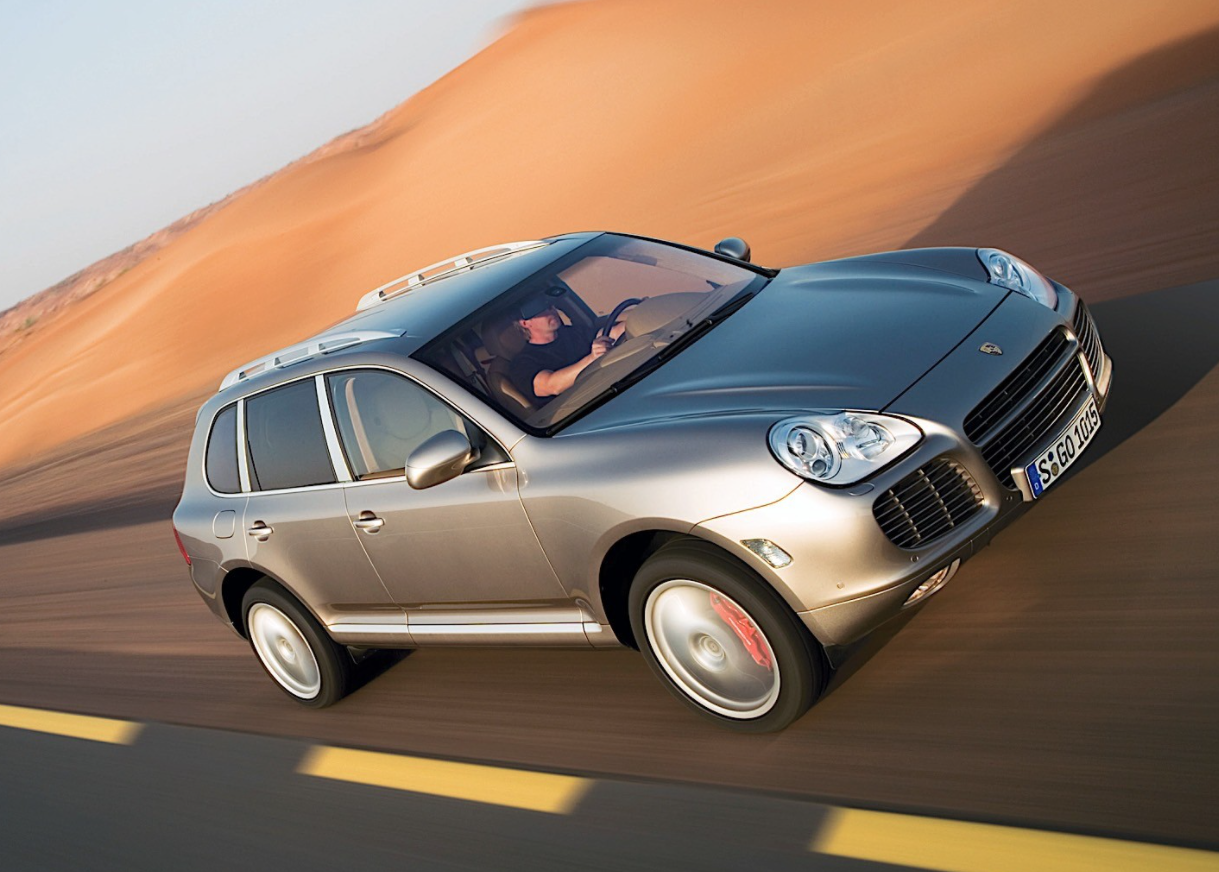

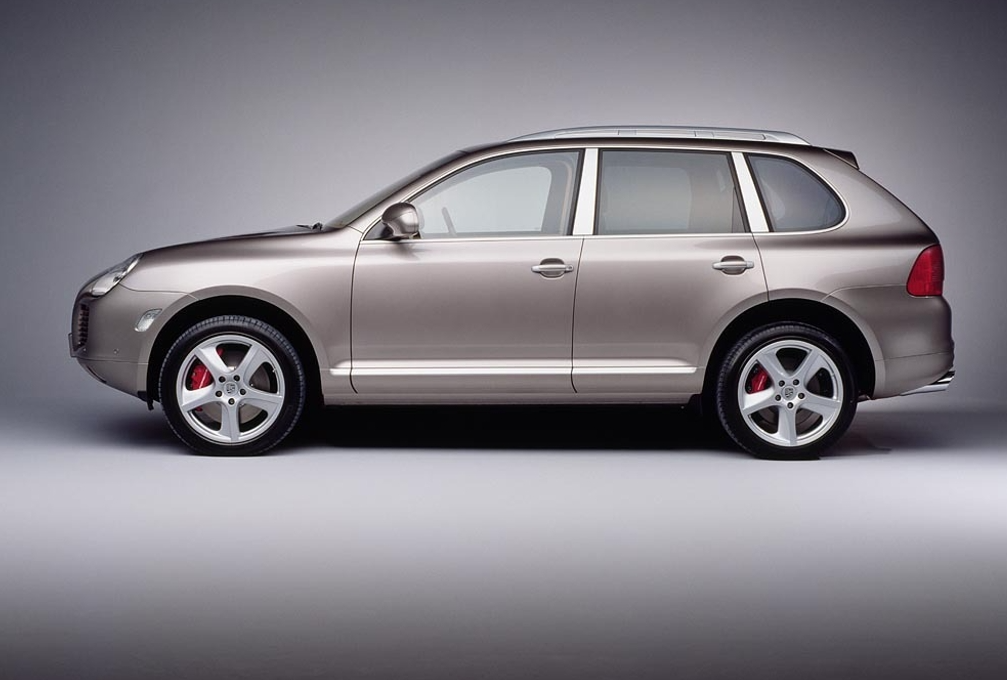

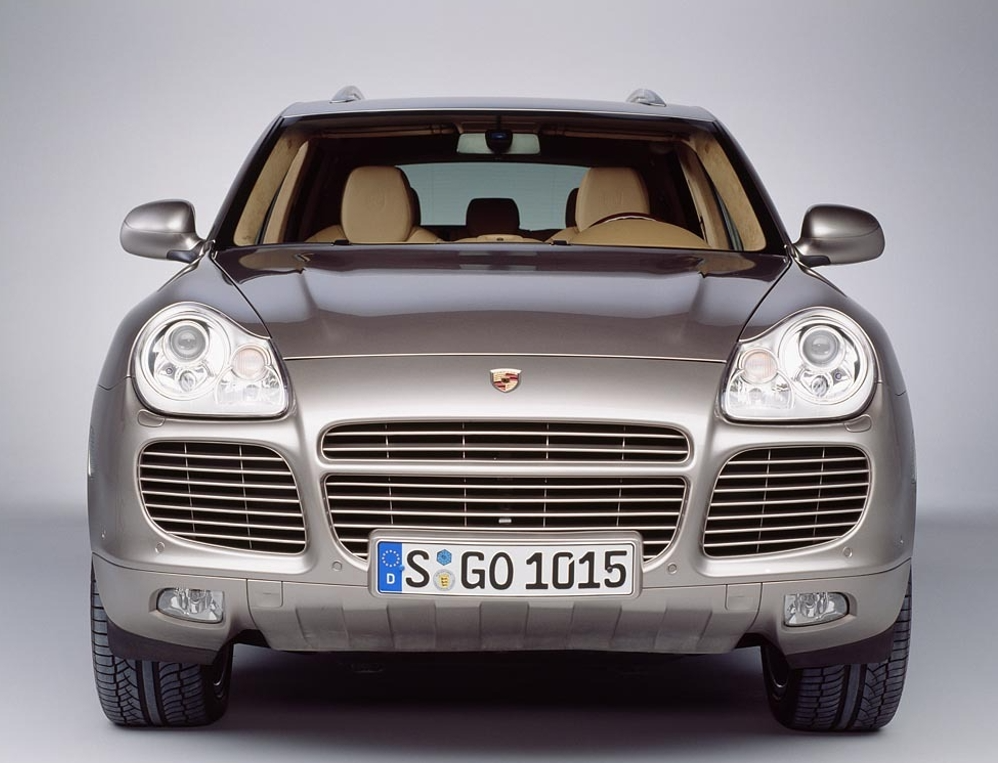
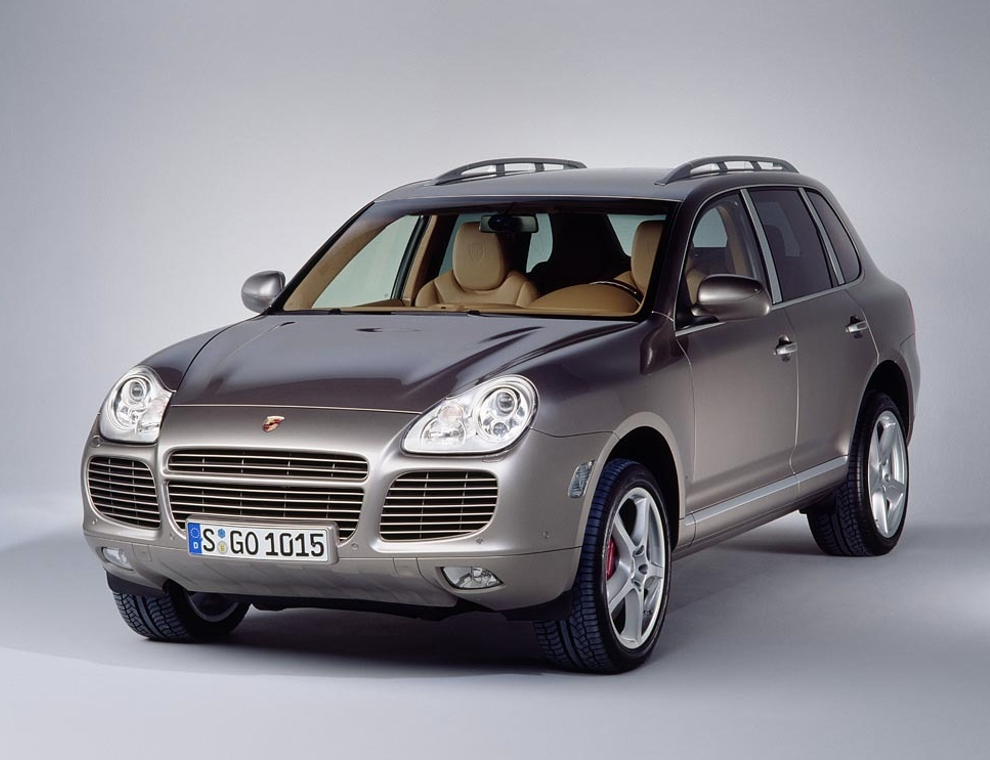



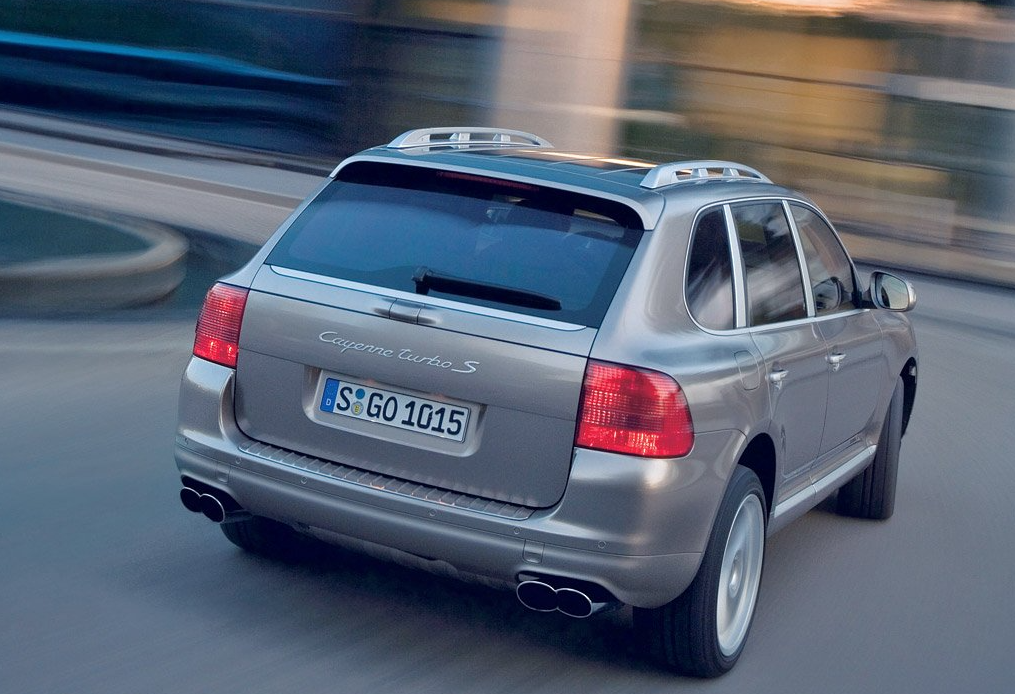









Does the 2006 Cayenne Turbo S VIN differ from the regular Cayenne Turbo?
0